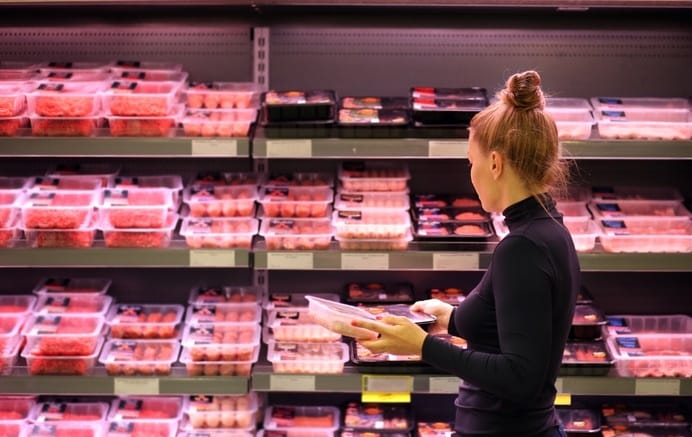- The Daily Yield
- Posts
- ♟ Tariff Gambit
♟ Tariff Gambit
Tech battles against corn invaders, dodgy meat deals, and political chess.

🖐 Morning, folks!
Welcome to today’s break down, helping you farm smarter, invest wiser, and maybe even sleep a little better at night (no promises).
— TDY team
COMMODITY & MARKET SNAPSHOT
Things continue to move as we quickly review key commodities, major indices, and top-moving cryptocurrencies as of Feb 25, 2025.
🌎 Commodities:
Canola: Currently trading at $501.40 per metric ton, reflecting a slight increase of 0.8% from the previous session.
Corn: Prices are at $5.01 per bushel, up 4 cents.
Wheat: Trading at $5.72 per bushel, showing a modest rise of 2 cents.
Soybeans: Currently priced at $10.31 per bushel, reflecting a 0.15% increase.
Soybean Oil: Trading at 45 cents per pound, experiencing a slight decrease of 0.57%.
Live Cattle: February futures are at $197.825, up $0.375.
Crude Oil: West Texas Intermediate (WTI) crude is priced at $70.90 per barrel, marking a 0.7% uptick.
Gold: Trading at $2,970 per ounce, up 0.5%.
Silver: Priced at $28.83 per ounce, reflecting a 2.07% decrease.
🏦 Major Indices:
S&P 500: Experienced a decline of 0.5%, marking its fourth consecutive drop since last week's all-time high.
Dow Jones Industrial Average: Inched up by 0.4%, bolstered by gains in sectors like home improvement.
Nasdaq Composite: Fell by 1.4%, primarily due to losses in tech giants such as Nvidia and Tesla.
🔗 Cryptocurrencies:
Bitcoin: Currently trading at $88,266, down 6.15% from the previous close.
Ethereum (ETH): Priced at $2,491.73, reflecting a 5.92% decrease.
Binance Coin (BNB): Trading at $622.20, down 1.74%.
Remember, in the world of commodities and crypto, the only constant is change. Keep your boots muddy and your investment portfolio diversified!
Data provided by: Brownfield, Trading Economics, Markets Insider, Investor’s Business Daily
Legal Disclaimer: This newsletter is for informational purposes only and not financial advice. Market data may change, and we don't guarantee its accuracy. Conduct your own research or consult a professional before making financial decisions. The Daily Yield and its affiliates aren't responsible for any losses. Trade wisely!
THIS WEEK IN AG HISTORY
🥛 On February 25, 1879, Anna Baldwin revolutionized the dairy industry by patenting the first practical milking machine. Her invention replaced the labor-intensive process of hand milking, significantly increasing efficiency and transforming dairy farming practices. Baldwin's milking machine paved the way for modern dairy operations, highlighting the critical role of innovation in agriculture.
AG-TECH & INNOVATION

🐦⬛ On today’s episode of “Crop Wars”: The high-tech battle against farm invaders continues… For centuries, farmers have been in an all-out war against feathered freeloaders like starlings, blackbirds, and crows that swoop in like an all-you-can-eat buffet is about to close.
These beaked bandits can wipe out 75% of a crop in just two days, leaving farmers with nothing but broken dreams and an empty wallet.
Traditional solutions? Let’s just say straw-stuffed scarecrows and ear-blasting propane cannons haven’t exactly outsmarted Mother Nature’s aerial thieves.
Enter the laser scarecrow. A genius invention by a University of Rhode Island researcher, Rebecca Brown, that finally levels the playing field. This high-tech guardian angel projects invisible green laser beams (which birds can see but humans can’t) across fields up to 600 feet wide, sending the pests flapping for their lives.
And unlike your neighbor’s propane cannon at 4 AM, this one’s silent and eco-friendly.
Newer versions come solar-powered with auto-targeting systems. Pest control companies say these laser rangers can prevent up to 90% of crop losses, and so far, birds haven’t figured out how to hack the system.
INDUSTRY & POLICY

🥩 No more “dodgy deals” for UK farmers: In a move that has UK farmers breathing a sigh of relief (and trade partners scratching their heads), the British government has declared it will no longer sign trade deals that allow food produced under lower standards than what’s legal in the UK, making it clear that British farmers won’t be undercut by imports that wouldn’t pass muster on home soil.
This shift comes after the much-criticized Australia trade deal, which had farmers fuming over unfair competition from imports that didn’t have to meet the same regulations. Hormone-treated beef, common in countries like the U.S., will stay banned in the UK.
Meanwhile, the European Union is doubling down on restricting imports of crops treated with pesticides banned within its borders, which could shake up global supply chains.
NFU President Tom Bradshaw didn’t mince words, saying previous trade agreements left UK farmers at a disadvantage. He urged the government to make deals that work for producers, not just politicians.
What Does This Mean for Farmers & Agribusinesses?
A fairer playing field: No more competing with cheaper imports that don’t follow the same strict rules.
Stronger market stability: Keeping food standards high could lead to more consistent pricing and consumer trust.
Tougher trade negotiations: The UK might face resistance from trade partners looking to get their products in—expect some friction at the bargaining table.
While this move protects UK farmers, it could complicate trade talks with countries that don’t share the same standards. But hey, at least British farmers won’t be losing sleep over bargain-bin beef sneaking onto their local supermarket shelves.
POLITICS

🍁 Keep your tariffs, we’ll keep our maple syrup: In a classic case of "trade wars: the sequel," Canada has issued a stern warning to its southern neighbor. Trump's proposed 25% tariff on all Canadian goods could boomerang, hitting American consumers right where it hurts, their wallets.
Key Points:
The "Trump tariff tax": Canada's Foreign Minister, Mélanie Joly, didn't mince words, dubbing the potential tariff a "Trump tariff tax" that would make everyday items more expensive for Americans.
Retaliation ready: Prime Minister Justin Trudeau announced that Canada isn't taking this lying down. In response to the U.S. tariffs, Canada plans to slap a 25% tariff on C$30 billion worth of U.S. goods, urging Canadians to support homegrown products.
Economic impact: Experts predict that these tit-for-tat tariffs could lead to higher prices on both sides of the border. From avocados to automobiles, consumers might feel the pinch as import costs rise.
Farmers relying on cross-border trade could face disruptions, leading to potential losses and operational headaches. Increased tariffs may result in higher costs for imported farming equipment and supplies, squeezing profit margins tighter than a pair of shrunken overalls.
While political leaders play their high-stakes game of tariff chess, farmers and consumers might end up footing the bill. It's a reminder that in trade wars, there are rarely any real winners, just a lot of folks wondering why their groceries cost more this week.
BRAIN AG-TIVATOR
🌽 A farmer has a 10-acre field of corn. Every night, half of the remaining corn gets eaten by deer. After three nights, only 1 acre of corn is left.
How many acres of corn were left after the first night?
SPREAD THE YIELD
🫵 Don’t keep the good stuff to yourself! Share this newsletter with fellow farmers, students, insiders, investors, and anyone who loves staying ahead of the curve.
The more we grow, the better we get, just like a well-fertilized crop! 📈
Answer: 8 acres were left after the first night.
Reply